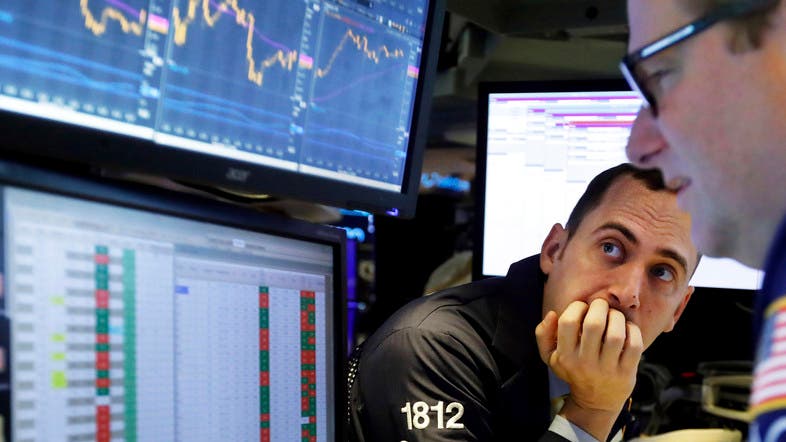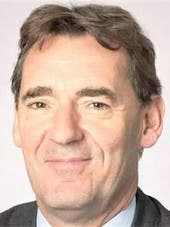Has the world economy reached peak growth?

At the start of a new decade, many commentators are understandably focused on the health of the global economy. This upcoming decade gross domestic product (GDP) growth will likely be lower than during the last decade, barring a notable improvement in productivity in the West and China, or a sustained acceleration in India and the largest African economies.
The Fed might be in denial about the next recession
The Fed is stuck.
The economic models that have guided monetary policy in recent decades say low unemployment should lead to higher inflation. When that happens, the Fed should respond by hiking interest rates, a move that also readies the Fed to fight the next recession by cutting rates back down.
Right now, however, the Fed faces remarkably low unemployment, low inflation, and low interest rates all at once, leaving the central bank with nowhere to go. Thus, everyone's wondering what the Fed can do when the next recession eventually comes, and whether the monetary policy toolkit needs an update. The central bank is currently taking a long and hard look at itself, with conclusions and any potential reforms due out later this year. But if a conference featuring former Fed Chair Ben Bernanke over the weekend is any indication, Fed officials aren't thinking nearly far enough outside the box.
First, the central bank is justifiably concerned that any significant effort on its part to increase interest rates could ruin the recovery or even cause the next recession. After cutting interest rates all the way to zero to combat the Great Recession, inflation hasn't justified a hike ever since. The Fed tested out some slow and modest interest rate hikes in the last few years, but in January it concluded even that was too much, and started cutting again. The central bank's interest rate target is currently between 1.5 and 1.75 percent with no indication it's rising again any time soon. Typically, it's taken an interest rate cut of around five percentage points for monetary policy to meaningfully combat economic downturns, and needless to say, you can't cut interest rates by 5 percentage points when they're only 1.75 percentage points above zero.
Now, former Fed Chair Ben Bernanke may not be in charge of the central bank any more, but his thinking is certainly indicative of the mainstream on this topic. And his presentation this weekend was strangely optimistic. Essentially, Bernanke thinks that the interest rate cuts the Fed can make, plus two of the more unusual tools it deployed in the Great Recession will be enough to combat the next downturn.
Specifically, those two tools are forward guidance and quantitative easing. "Forward guidance" is basically a fancy term for the Fed doing a better job communicating its long-term plans and intentions to the financial markets. The idea here is that if the Fed makes it abundantly clear, for instance, that it's going to keep interest rates low until inflation picks back up significantly, investors will be willing to pump more money into the economy and take more risks than if they were less sure about the Fed’s determination to not hike. As for quantitative easing, that was the policy where the Fed bought lots of longer-maturity Treasury bonds and other financial instruments in an effort to lower long-term interest rates. Normal monetary policy only targets short-term interest rates, again through bond purchases and sales, as well as other tools more recently. Ultimately, quantitative easing aims to boost the economy by getting more investment into the economy over a longer time horizon.
Bernanke calculates these two policies could achieve a combined effect equal to cutting short-term interest rates by three percentage points. Add that to an actual cut in short-term rates back to zero, and you could get a boost roughly equivalent to a 5-percentage point cut.
Now, why did I call this "strangely optimistic?"
First off, as Bernanke himself admits, he's assuming the natural rate of interest is slightly higher than the Fed's current target. The "natural rate" is that ideal sweet spot where employment is at a maximum and inflation is stable. In other words, Bernanke is assuming the Fed is already stimulating the economy with its current stance. But if he's wrong, then even his proposed policies won't actually deliver the boost he's anticipating. And given how agonizingly tepid and slow the recovery from the Great Recession was and continues to be, it seems that chances are pretty good Bernanke is overestimating the natural rate.
There's also the question of whether a five percentage point boost will actually be enough. It certainly wasn't enough to launch a speedy recovery after the 2008 collapse. Yet that crisis was also unusual in its depth and severity. But what about the 2001 recession? It was a much more standard downturn, and the Fed was able to cut by five percentage points without bumping up against the zero lower bound. Even then, unemployment recovered so slowly that it only got to 4.4 percent when the Great Recession hit — it never got back to its pre-2001 low of 3.9 percent. The portion of prime-age workers who have jobs — which has actually been performing better recently as a metric of economic health — also never got back to its pre-2001 high before the 2008 recession knocked it down again. The unspoken hole in Bernanke's assessment is that the last recovery from a normal recession that a five percentage point cut delivered was completely inadequate.
This is part of a much larger problem bedeviling the Fed, which is that the economy has been weakening for decades, with interest rates having to go lower and lower to boost it, without ever being able to get back to their previous peaks. Bottoming out at zero is the inevitable result.
Most of the other suggestions coming out of the Fed's rethink propose some version of softening the Fed's resistance to inflationary risk. In practice, that would mean cutting short-term interest rates further right now — possibly all the way to zero — in the hopes of boosting the recovery, eventually justifying higher rate hikes back up before the next downturn hits. Though that involves its own fingers-crossed risk-taking as much as Bernanke's framework: if the boost isn't enough to drive the necessary economic upturn, there's no fallback.
The problem is more promising avenues — such as using the Fed's powers to guarantee state-level infrastructure spending, or to combat the trade deficit — would require the Fed to step well outside of the conceptual limits that have separated monetary policy from fiscal policy. Thus far, that's a line the central bank has been loath to cross, even as it stares down the barrel of its own increasing impotence
Dec 18, 2012 - “According to Ricardo's theory of rent, the rate of profit has a tendency to fall, as a result of the accumulation of capital and the growth of the population, because the necessary means of subsistence rise in value, or agriculture becomes less productive.
Is there a tendency for the rate of profit to fall?
Econometric evidence for the U.S. economy, 1948-2007
Deepankar Basu∗ Panayiotis T. Manolakos†
June 24, 2010
Abstract
The law of the tendential fall in the rate of profit has been at the center of theoretical
and empirical debates within Marxian political economy ever since the publication
of Volume III of Capital. An important limitation of this literature is the absence
of a comprehensive econometric analysis of the behaviour of the rate of profit. In
this paper, we attempt to fill this lacuna in two ways. First, we investigate the time
series properties of the profit rate series. The evidence suggests that the rate of profit
behaves like a random walk and exhibits “long waves” interestingly correlated with
major epochs of U.S. economic history. In the second part, we test Marx’s law of
the tendential fall in the rate of profit with a novel econometric model that explicitly
accounts for the counter-tendencies. We find evidence of a long-run downward trend
in the general profit rate for the US economy for the period 1948-2007.




No comments:
Post a Comment